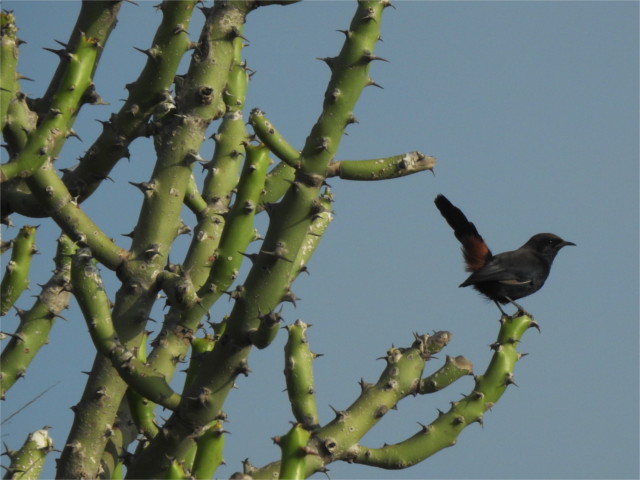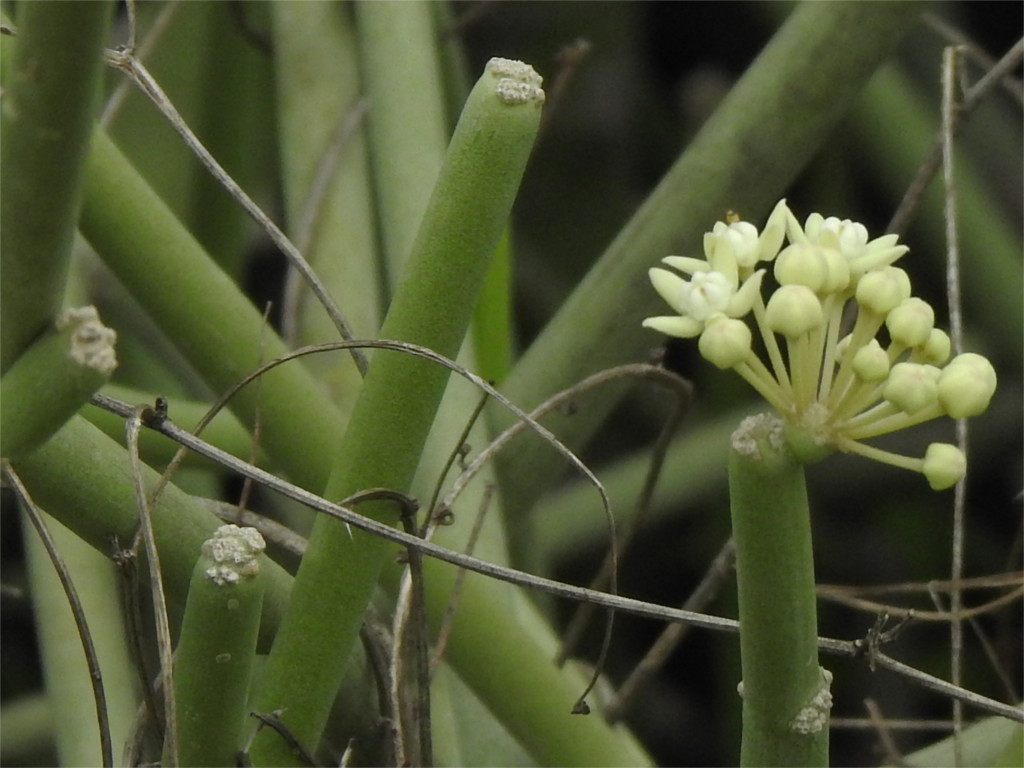Aak (Calotropis procera), named rubber bush, is the typical dry area plant. You won’t find it deeper in the Thar desert, but the bushes were visible around rocks everywhere we went. In the Rann of Kutch they seem to be usually less than two meters high. Usually they attract ants, so I keep a watch on the small purple five-petalled flowers to see what kinds of ants I can spot. In Kutch, as the featured photo shows, I didn’t manage to get the flowers with any ants at all.
The succulent called Thor (Euphorbia caducifolia) is the commonest plant in this region. I spotted lots of birds sitting on a projecting stem of the bushes. You can see an Indian Robin in the photo on the left above. They can grow well above a man’s height, 3 meters often, taller sometimes. It flowers in late winter. If you want to see what the local insects are, keep a watch on its flowers at that time. They attract many of local insects wherever they grow.
Another succulent that is widely found in the desert is the Aak Thor (Cynanchum acidum). It has attractive tiny six-petalled white flowers (6 is not a Fibonacci number) which were budding from the ends of the stem; you can see them most of the year except in the winter months. It seems to be a climber. I saw stems trailing on the ground when there’s nothing else growing nearby.
The Rann of Kutch is full of many different kinds of grass or millets growing wild. I find myself completely unable to identify grasses. I’ll have to spend time learning more about this group. Many of them were in bloom at this time, immediately after the monsoon.
The low bushes of Kana (Commelina benghalensis) were very visible even from speeding cars, because of the attractive three-petalled blue flowers. There was a variant in purple which was also quite widespread. The flowers are large, petals can be half a centimeter in size. It seemed that a plant can either have blue or purple flowers, but they can grow quite close to each other. That makes me suspect that the colour is determined by genetics rather than soil.
Thorny nightshade (Solanum virginianum), Kateli in Hindi, is again a plant that is common in most dry areas in India. I’ve seen it deep inside the Thar Desert as well. Here you see the five-petalled flower poking out from under a different bush. Kateli is a spreading herb, and this particular plant was spread along the ground below this other bush. You can see it flowering around the year, except in the monsoon months.
Perhaps the commonest tree that I saw was the Khair (Senegalia catechu). It happened to be in flower. It is a typical mimosa, with the feathery leaves (called pinnate by botanists), flowers with wire-like petals, and thin gnarly trunks. They grew up to a man’s height, and spread out thorny branches which were exactly at the wrong height for me. if you add the Kair (Capparis decidua, bare caper), which I’ve written about earlier, I think I’ve listed the most widespread plants which I noticed in this area.





















